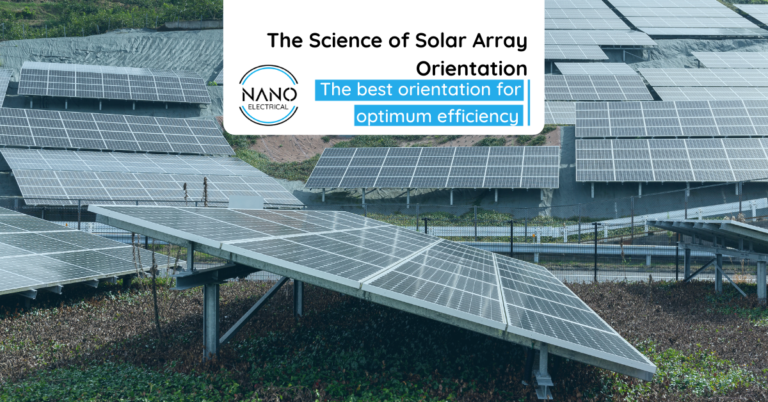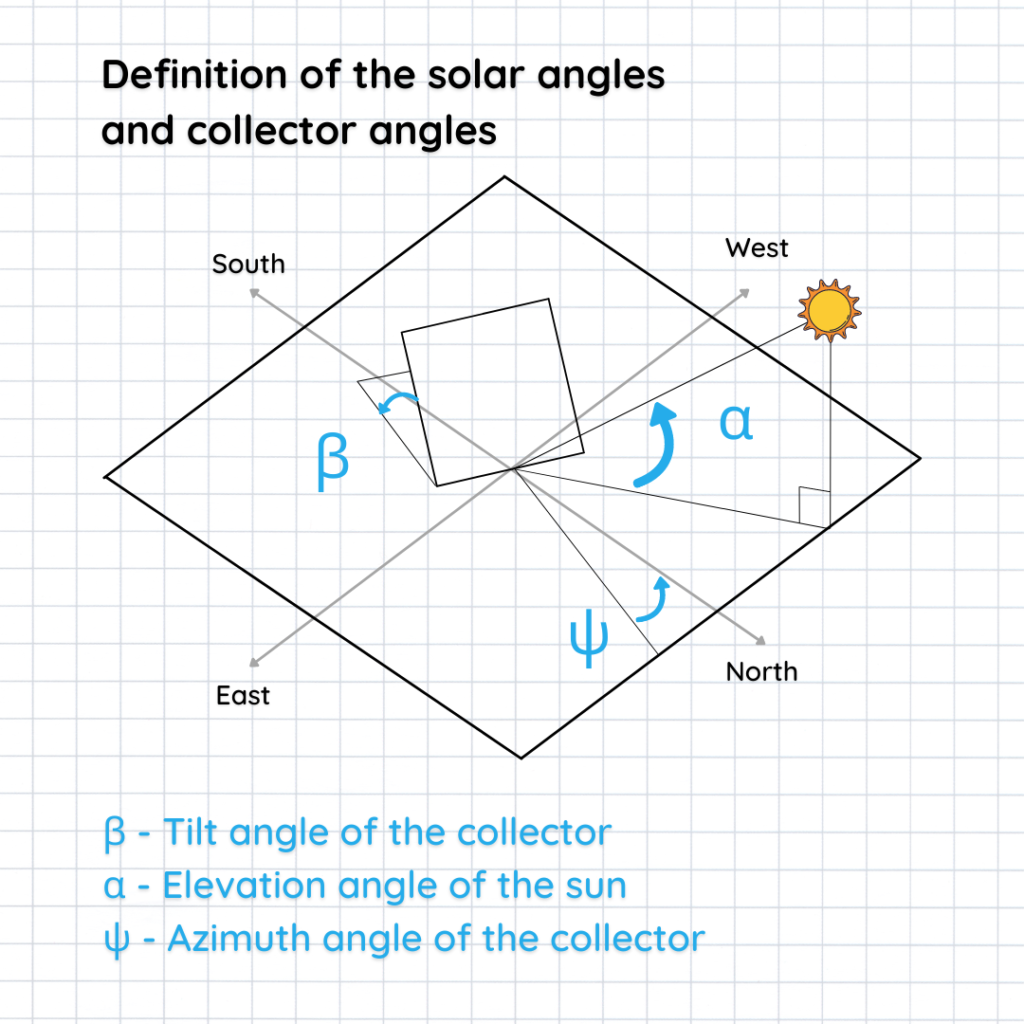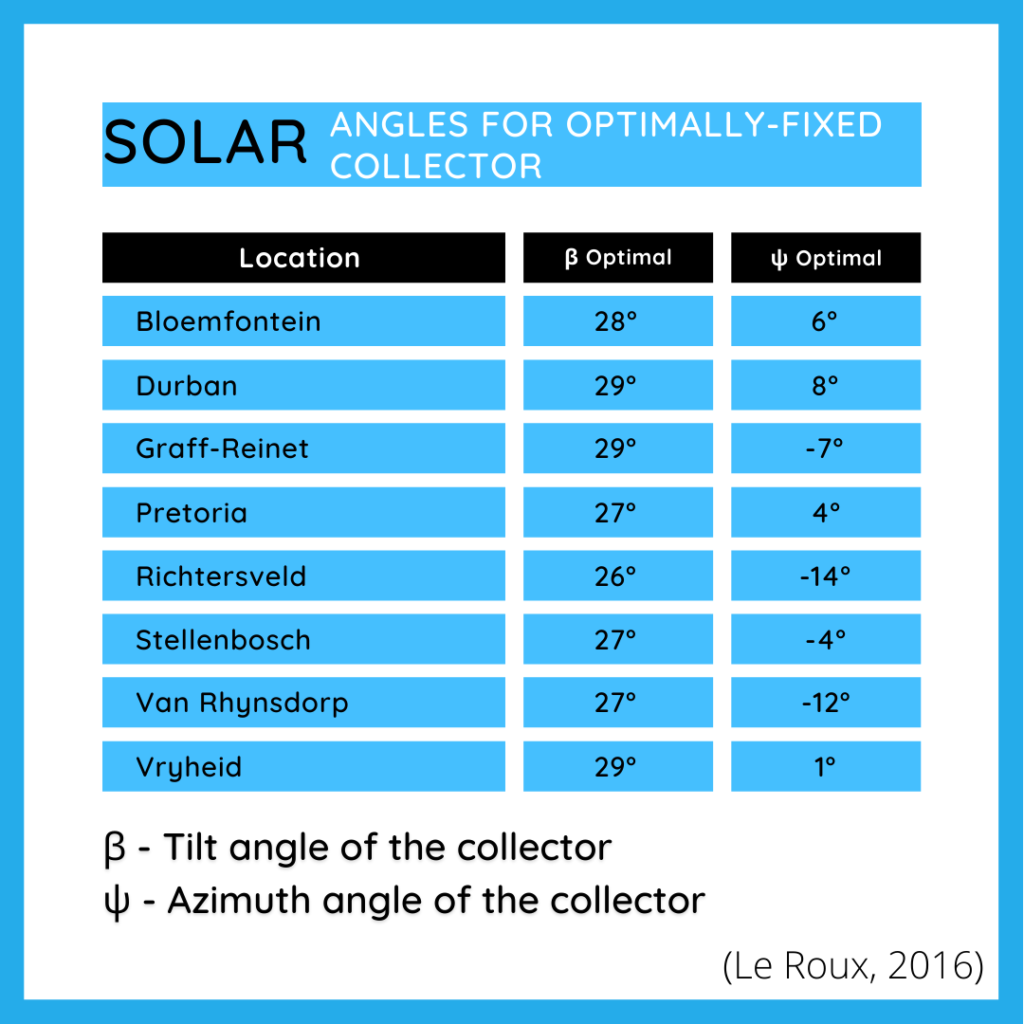Nano Electrical

The Science of Solar Array Orientation
South Africa is often considered one of the largest solar markets on the African continent. Under renewed calls for a shift away from fossil fuels and the necessity of relieving strain from an ageing power grid, we take a look at measured data to determine the optimum tilt and orientation of PV cells in SA.
In a recent publication that measured data from nine measuring stations within the Southern African Universities Radiometric Network, Le Roux (2016) compared the experimental data of optimally fixed PV collectors to a horizontally-fixed reference PV collector and found the annual solar insulation to be 10% more for optimally fixed collectors. A 45% increase in annual solar insulation was reported for solar-tracking PV collectors.

A solar PV collector operates most effectively when the rays of the sun are perpendicular to the facade of the collector. Achieving a 90° insolation angle is not always achievable as the sun's position in the sky shifts during the day and according to season. It is therefore desirable to mount the solar collectors at such an orientation that the maximum amount of solar energy reaches the collector surface all year round. This is known as an optimally fixed solar installation.

High yield solar stations employ technologies such as multi-axis solar trackers that are able to orient the PV collectors actively according to the real-time position of the sun, allowing a 90° insolation angle at all times. Solar tracker installations are expensive and require a large free-standing footprint to operate.
A 24 Hour Timelapse of DEGER MLD Technology in action at The Central University of Technology (CUT), Free State, South Africa.
In the Southern Hemisphere, solar insulation is captured at an angle dependent on your latitude from the North. The illustration below depicts the definition of the solar and collector angles:

Tabulated below, the results from the 9 SAURAN measurement stations detailing the optimum angles of a fixed PV collector:

Le Roux, W. G. (2016). Optimum tilt and azimuth for solar collectors in South Africa using measured data. Pretoria: Department of Mechanical and Aeronautical Engineering University of Pretoria.
Nano Electrical
Share our details with your friends and family
Original article from Electrical Compliance Cerificate
Nano Electrical is proudly powered by WordPress